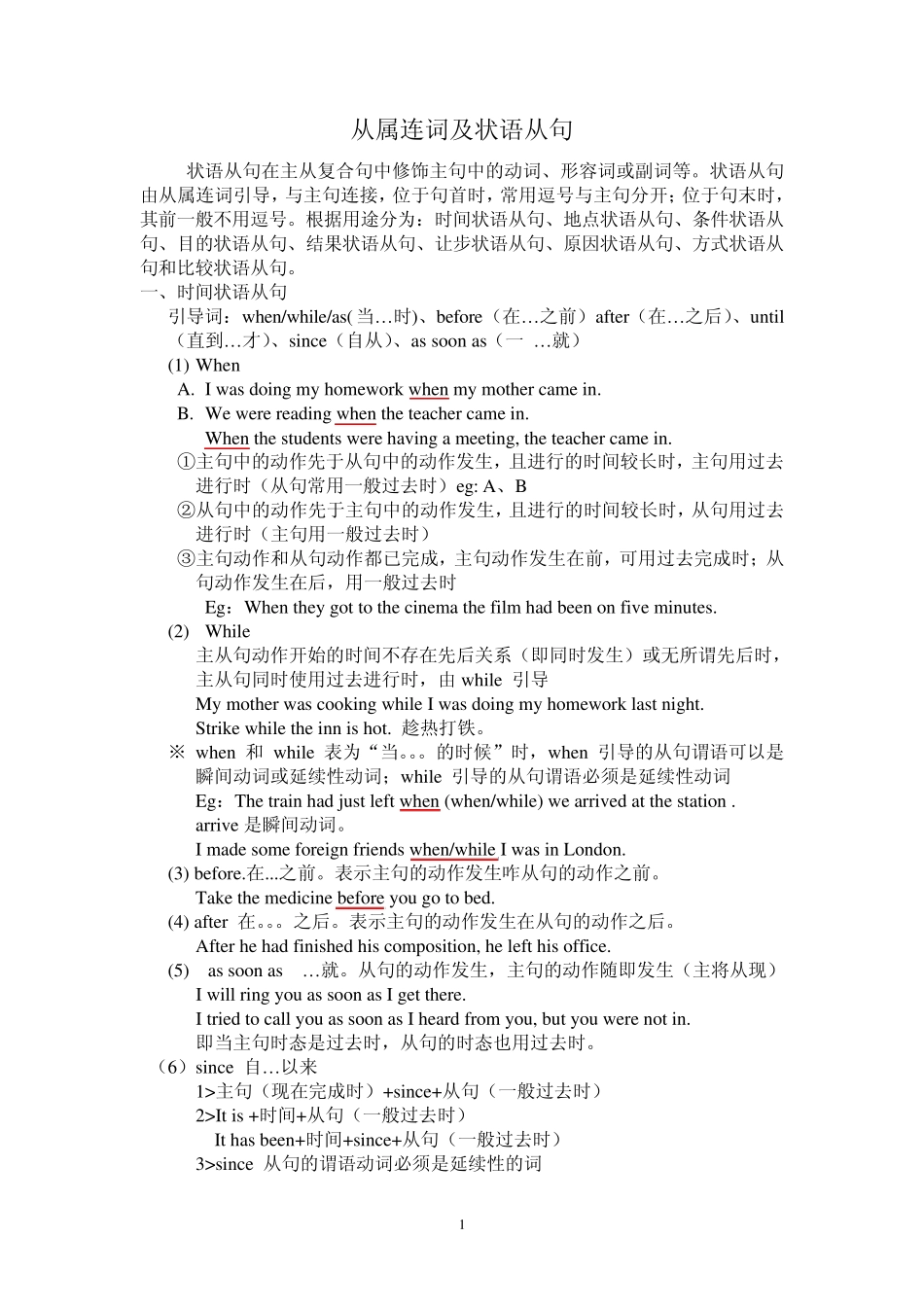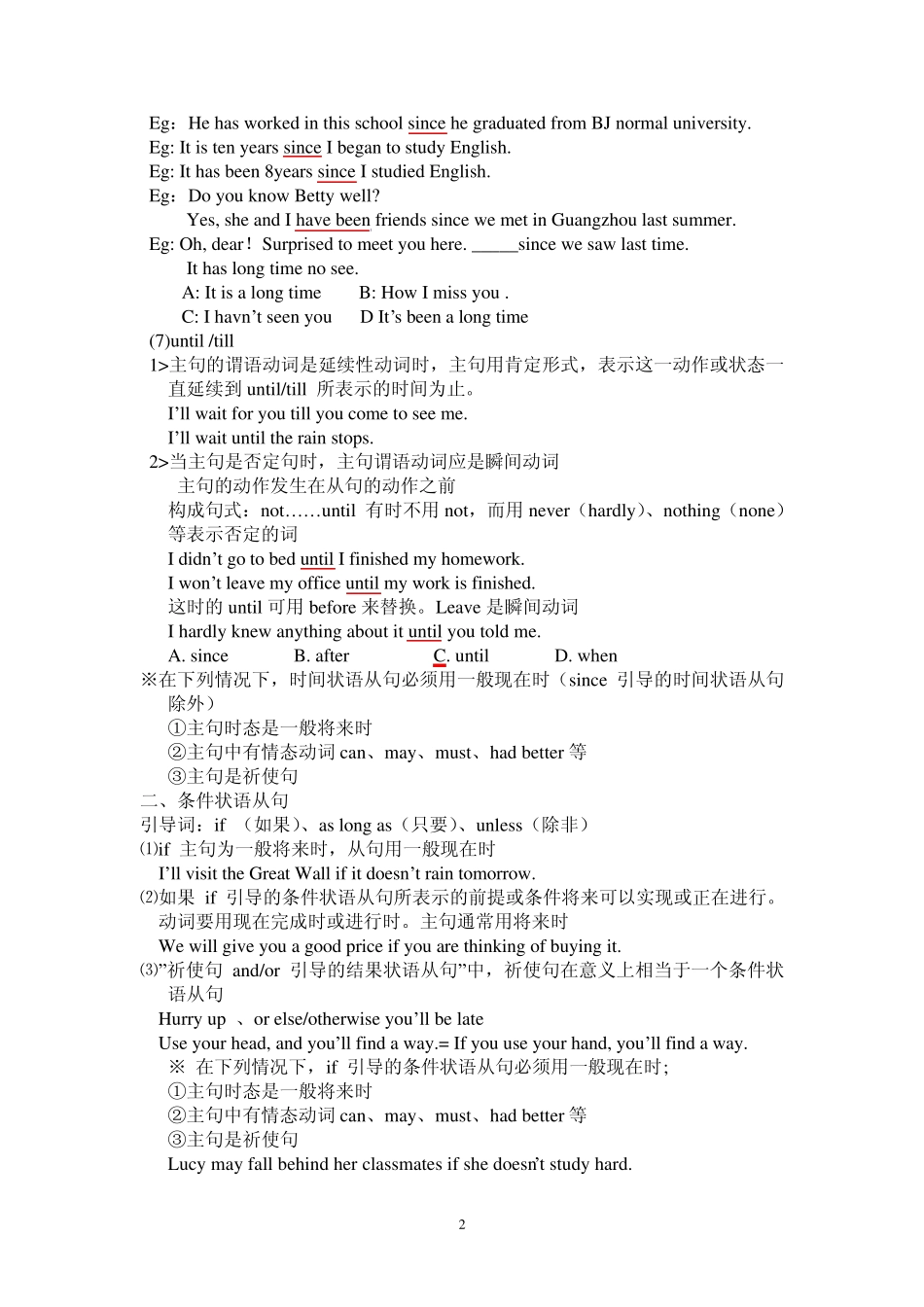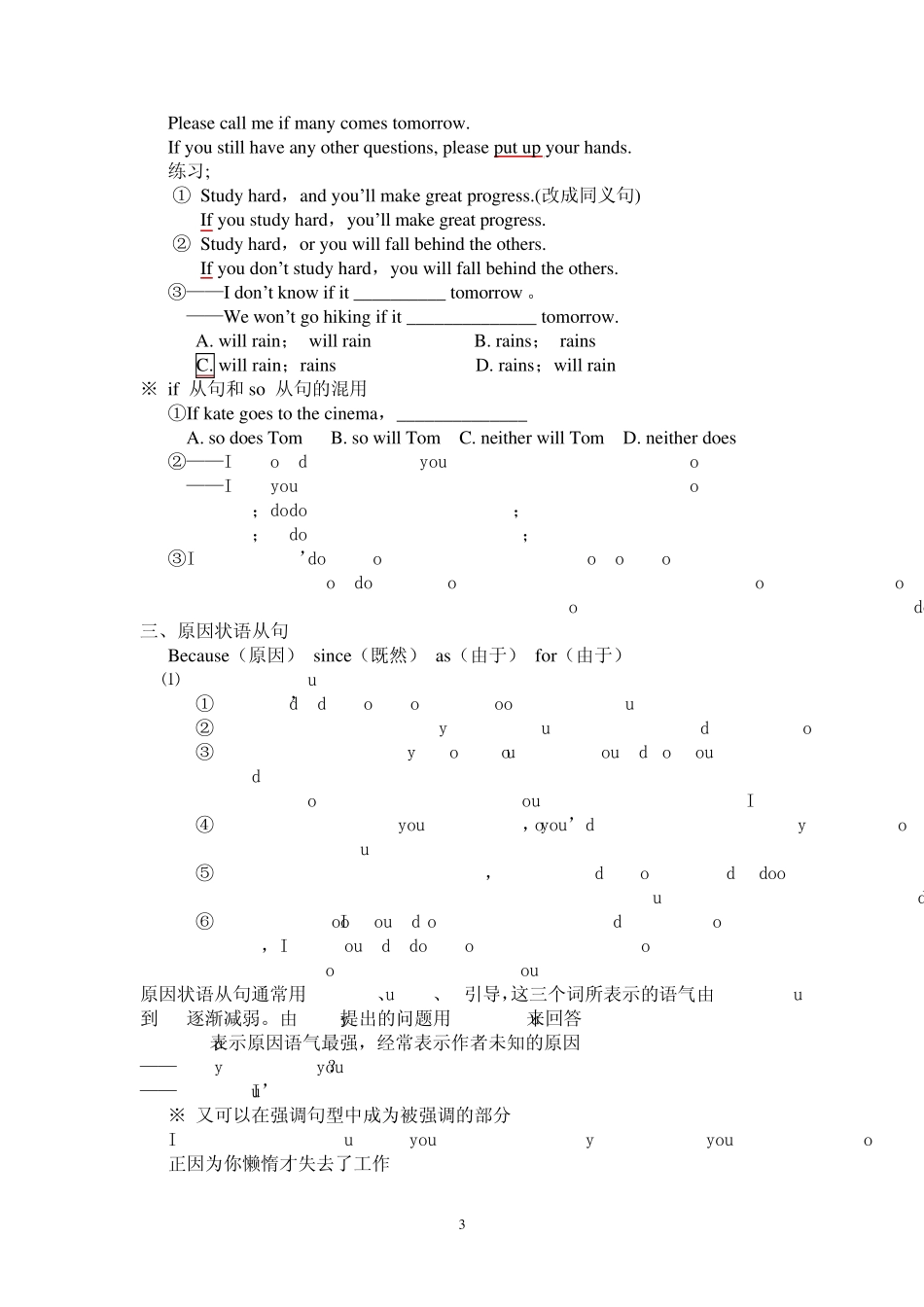1 从属连词及状语从句 状语从句在主从复合句中修饰主句中的动词、形容词或副词等。状语从句由从属连词引导,与主句连接,位于句首时,常用逗号与主句分开;位于句末时,其前一般不用逗号。根据用途分为:时间状语从句、地点状语从句、条件状语从句、目的状语从句、结果状语从句、让步状语从句、原因状语从句、方式状语从句和比较状语从句。 一、时间状语从句 引导词:when/while/as( 当…时)、before(在…之前)after(在…之后)、until(直到…才)、since(自从)、as soon as(一 …就) (1) When A. I was doing my homework when my mother came in. B. We were reading when the teacher came in. C. When the students were having a meeting, the teacher came in. ①主句中的动作先于从句中的动作发生,且进行的时间较长时,主句用过去进行时(从句常用一般过去时)eg: A、B ②从句中的动作先于主句中的动作发生,且进行的时间较长时,从句用过去进行时(主句用一般过去时) ③主句动作和从句动作都已完成,主句动作发生在前,可用过去完成时;从句动作发生在后,用一般过去时 Eg:When they got to the cinema the film had been on five minutes. (2) While 主从句动作开始的时间不存在先后关系(即同时发生)或无所谓先后时,主从句同时使用过去进行时,由while 引导 My mother was cooking while I was doing my homework last night. Strike while the inn is hot. 趁热打铁。 ※ when 和 while 表为“当。。。的时候”时,when 引导的从句谓语可以是瞬间动词或延续性动词;while 引导的从句谓语必须是延续性动词 Eg:The train had just left when (when/while) we arrived at the station . arrive 是瞬间动词。 I made some foreign friends when/while I was in London. (3) before.在...之前。表示主句的动作发生咋从句的动作之前。 Take the medicine before you go to bed. (4) after 在。。。之后。表示主句的动作发生在从句的动作之后。 After he had finished his composition, he left his office. (5) as soon as …就。从句的动作发生,主句的动作随即发生(主将从现) I will ring you as soon as I get there. I tried to call you as soon as...


